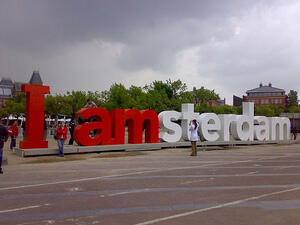The participation of citizens usually aims at acquiring feedback on a planning proposal that has already been made. By taking the perspectives and experiences of residents as a starting point, the approach of branding turns the traditional planning world upside down. The participations method of branding includes processes where inhabitants, experts and professionals alike explore the designed identity of the neighborhood. A group of young people interviewed as neighborhood reporters residents, recorded participation meetings and branding sessions. “I would like to organize events to bring people together, once a month or so”, stated a young fellow.
“What is branding in a case of urban renewal?” questions the author of the enclosed video. His answer: “It is a way of defining the atmosphere of a neighborhood and a looking for core values. The resulting brand works as a common perspective for professionals, residents and community organizations when building a better neighborhood.” For all those who have heard about the concept of ambient branding these words must ring a bell. As the branding-agency-montreal states in its blog, ambient branding is a movement, “where a brand is structured around cognitive intelligence: values and social needs instead of endorsing its extrinsic properties. (…) Its innovations effectiveness must be validated in rigorous disciplines - cognitive science, neuroscience, experimental psychology.”
Once more Maslow’s pyramid of needs is used to describe an idea but in the case of ambient branding it seems to be going through a new hierarchy infrastructure. “Today’s alter consumer are not only buying to meet a need but are consuming to fit and to take part in a community, and to invest in its social movement. They consume to discover the self, learn about others and explore the world around them in a much deeper sense.” Facebook, Twitter, Youtube and other social media tools or Websites are one, but not the only way to explore this world.
In Geuzenveld-Slotermeer however the focus has been on face-to-face communication. Identity sessions took place where core values of the new neighborhood were identified. Participants answered questions like: What does the concept of home mean to me? What were the results and what are the lessons that have been learned?
SGS reports how an innovative process led one neighborhood towards its new identity, led by an ambition that “The atmosphere in the new neighborhood should be relatively relaxed; urban, without the hectic feeling of the big city.”
For more information please visit www.apango.eu
Foto: Flickr - copyright Andrew Zen

